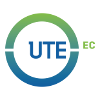Sliding Mode Control Based on Internal Model for a Non-minimum phase Buck and Boost Converter
DOI:
https://doi.org/10.29019/enfoqueute.v10n1.442Keywords:
Buck-Boost; non-minimum phase system; internal model control; sliding mode control; chattering.Abstract
This work presents the application of different schemes to control a non-minimum phase Buck-Boost converter. Three control schemes are used. The first controller presented is a PI controller, the second one is Sliding Mode Control and the third one is a combination of two control schemes, Internal Model Control and Sliding Mode Control. The controllers are designed from a Right-Half Plane Zero (RHPZ) reduced order model. The RHPZ model is converted, using Taylor approximation, in a First Order Plus Dead Time (FOPDT) model and after that, the controllers are obtained. The performance of the SMC-IMC is compared against to a PI controller and a SMC. The simulation results show that SMC-IMC improves the converter response, reducing the chattering and presenting better robustness for load changes
Downloads
References
Camacho O. and de La Cruz F. (2014). Controlador de Modos Deslizantes basado en Predictor de Smith y Modelo de Segundo Orden para Procesos con Elevado Retardo. Revista Politécnica 35 (2), 18-24.
Camacho O., Rojas R., and García W. (1999). Variable Structure Control applied to chemical processes with inverse response. ISA Transactions, 56-63.
Camacho O., Smith C. and Moreno W. (2003). Development of an internal model sliding mode controller. Industrial & Engineering Chemistry Research 42, 568–573.
Dominguez X., Camacho O., Leica P. and Rosales A. (2016). A Fixed-Frequency Sliding-mode Control in a Cascade Scheme for the Half-Bridge Bidirectional DC-DC Converter. 2016. IEEE Ecuador Technical Chapters Meeting (ETCM). DOI: 10.1109/ETCM.2016.7750835
Forouzesh M., Siwakoti Y. P., Gorji S. A., Blaabjerg F. and Lehman B. (2017) Step-Up DC–DC Converters: A Comprehensive Review of Voltage Boosting Techniques, Topologies, and Applications. IEEE Transactions on Power Electronics 32(12):9143-9178.
Huang J., and Liu S. (2016). Analysis of Non-minimum Phase in Buck-Boost Converter. MATEC Web of conferences 55, ACPPE 2016, 1-6.
Rozanov Y., Ryvkin S., Chavligin E. and Voronin P. (2016). Powers Electronics Basics. New York, EE.UU.: Editorial CR Press, Taylor & Francis Group. p 241 -264.
Smith C. and Corripio A. (1997). Principles and Practice of Automatic Process Control. Second Edition. New York, EE.UU.: Editorial Limusa Wiley. p 314-315.
Tahri F., Tahri A. and Flazi S. (2014). Sliding mode Control for DC-DC Buck Converter. Third International Conference on Power Electronics and Electrical Drives ICPEED'14, Algeria, 1-5.
Tarakanath K., Pathwardan S. and Agarwal V. (2014). Internal Model Control of dc-dc Boost Converter Exhibit Non-Minimum Phase Behavior. IEEE PEDES 2014, 1-8.
Published
Versions
- 2019-03-29 (2)
- 2019-03-29 (1)
How to Cite
Issue
Section
License
The articles and research published by the UTE University are carried out under the Open Access regime in electronic format. This means that all content is freely available without charge to the user or his/her institution. Users are allowed to read, download, copy, distribute, print, search, or link to the full texts of the articles, or use them for any other lawful purpose, without asking prior permission from the publisher or the author. This is in accordance with the BOAI definition of open access. By submitting an article to any of the scientific journals of the UTE University, the author or authors accept these conditions.
The UTE applies the Creative Commons Attribution (CC-BY) license to articles in its scientific journals. Under this open access license, as an author you agree that anyone may reuse your article in whole or in part for any purpose, free of charge, including commercial purposes. Anyone can copy, distribute or reuse the content as long as the author and original source are correctly cited. This facilitates freedom of reuse and also ensures that content can be extracted without barriers for research needs.
This work is licensed under a Creative Commons Attribution 3.0 International (CC BY 3.0).
The Enfoque UTE journal guarantees and declares that authors always retain all copyrights and full publishing rights without restrictions [© The Author(s)]. Acknowledgment (BY): Any exploitation of the work is allowed, including a commercial purpose, as well as the creation of derivative works, the distribution of which is also allowed without any restriction.























 Enfoque UTE - Facultad de Ciencias de la Ingeniería e Industrias - Universidad UTE
Enfoque UTE - Facultad de Ciencias de la Ingeniería e Industrias - Universidad UTE